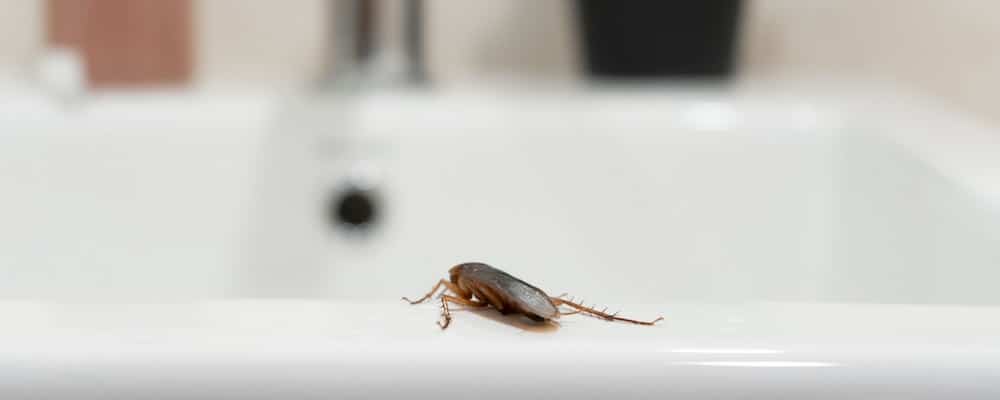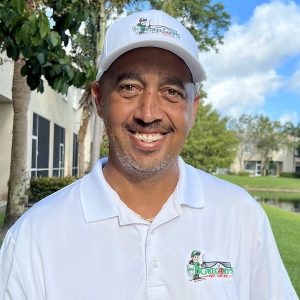
When a flat, brown, six-legged bug flits through your window or across your kitchen floor, a closer look is probably the last thing on your mind. However, for pest control purposes, it may be worth knowing what type of insect it is. Today’s article covers the differences between two Florida staples: palmetto bugs and cockroaches. What’s the difference?
From a distance, many of South Florida’s most common pests have a striking resemblance. Ants and termites, rats and mice, bed bugs and fleas – to the untrained eye, it can be difficult to tell which of these has made their way into your home, and in most cases, it’s the damage and waste they leave behind that offers the biggest clue. For example, termites destroy the home by eating wood, while ants burrow through it to make tunnels. The effects of flea and bed bug infestations are both stressful and require immediate pest control services, but the diseases that fleas carry may cause severe illness or death.
So, what about cockroaches and palmetto bugs? Is there a difference in how they look? What problems do they pose, and how do pest control professionals recommend getting rid of them? The answer to this question is quite specific for Florida’s residents – keep reading to get the rundown from GPC’s experts.
What is a Palmetto Bug?
Ever been confused about palmetto bugs versus cockroaches? You’re not alone. Depending on where you are in the country, the palmetto bug may not refer to the same species. In South Carolina, palmetto bugs are a colloquial name for the American Cockroach, while some residents in Texas and Georgia reserve this name for the Smokybrown variant. Since it’s assumed the term ‘palmetto bug’ is a reference to any roach that could be hiding under the shed bark at the base of palmetto trees, the lack of consensus makes sense.
For residents of Florida, however, a palmetto big is the Florida Woods cockroach, or Eurycotis Floridana – one of the largest species. Adults can grow to 1.6 inches, with a color that ranges from reddish-brown to a very dark brown, and tiny wings that do not facilitate flight. A bug exterminator might describe them as similar to Oriental cockroaches.
Palmetto bugs are a type of cockroach in Florida, specifically called the Florida Woods cockroach. This sets them apart from other species, though they are closely related.
What are the Differences Between Cockroaches and Palmetto Bugs?
Now that we’ve established which species is known as the palmetto bug throughout South Florida and the rest of the state, we can look at what differentiates them from other cockroaches commonly targeted with pest control services – American, German, and Smokybrown.
- Appearance – Florida’s palmetto bugs are the largest of the four, growing as large as 1.6 inches, while American cockroaches trailing right behind at 1.5 inches, Smokybrowns at 1.4 inches, and German cockroaches get no bigger than 5/8ths of an inch. The Florida Woods cockroach is also the darkest of the species unless it’s recently molted, which leaves it reddish-brown for some time. Due to its stoutness, the Florida Woods also tends to be slightly rounder than its oval-shaped relatives with an armored beetle look. Its undeveloped wings make it unable to fly the distances of the other species.
- Dwelling Habits – If you reserve the pest control services of a bug exterminator for a palmetto bug infestation, a majority of the work will likely be outdoors. As the name implies, Florida Woods cockroaches prefer to be outside underneath the shrubbery, mold, and soil they feed on. Most other cockroaches prefer to stay closer to the home, inside it, or underneath.
- Activity – Florida’s warm climate ensures cockroach activity doesn’t slow down much during the winter, though most of their breeding takes place during the spring and summer months. From a hatched egg, Palmetto bugs can reach adulthood in about four months – longer than German cockroaches which take two months, and much shorter than Smokybrowns which take ten months, plus American cockroaches which can take up to 600 days.
- Defense – The Florida Woods is also known as the ‘stinking’ cockroach due to the foul liquid it can produce to ward off predators. This is a unique trait not found in most Florida cockroaches.
How to Treat Palmetto Bug and Cockroach Infestations
Florida Woods cockroaches are the least likely to create an indoor infestation, but whether it’s a palmetto bug or other type of cockroach in your home, pest control measures are the same:
- Removal of food sources and nests – Like any other pest, cockroaches cannot thrive in an environment unless they have the resources to do it. Frequent cleaning, removal of debris, and proper sealing of all food containers and trash cans can limit their ability to cause an infestation.
- Homemade treatments – Some mixtures, such as baking soda and sugar, can kill roaches and other pests like ants. Ensure any method used is researched, properly handled and poses no danger to your family and pets.
- Cockroach insecticides and traps – For smaller infestations, commercial consumer roach sprays and traps can make quick work of these pests.
- Pest control services – Once your cockroach infestation passes a certain point, along with extermination, there’s the issue of cleanup to consider. A bug exterminator handles the entire process from start to finish, including the removal of dead cockroaches, and can perform a thorough inspection to locate and destroy hidden nests.
South Florida Pest Control Services from Gregory’s
The safest, most effective way to remove bugs, pests, and rodents from your Florida home is to get a full-service treatment from a professional pest control company.
Gregory’s Pest Control, based out of Coral Springs, Florida, has over thirty years of experience protecting families in Broward, Palm Beach, and other South Florida areas from infestations. We also have a barrier protection program to eliminate entry points and breeding areas, and an advanced maintenance service that sees one of GPC’s expert personnel returning for a checkup every 60-90 days.
We invite you to contact us today for a free quote or schedule a complimentary pest evaluation visit.

Paul Gregory
Owner/President of Gregory’s Pest Control
I’m a 2nd generation pest control owner who started working for my father in 1999. I was raised in South Florida and feel blessed to call it home for my entire adult life. As a long-term Florida resident, I recognize the challenges of controlling the many different pests that thrive in our subtropical climate. In particular, I understand how difficult it can be to prevent pests from invading our homes and businesses. By helping families solve their pest problems so they can live safer, more comfortable lives, I feel I am also meeting my family’s commitment to help our community. When I’m not out fighting pests, you can find me on the golf course or out on a soccer field where I have been fortunate enough to coach soccer to kids of all ages for the past 20 years.




